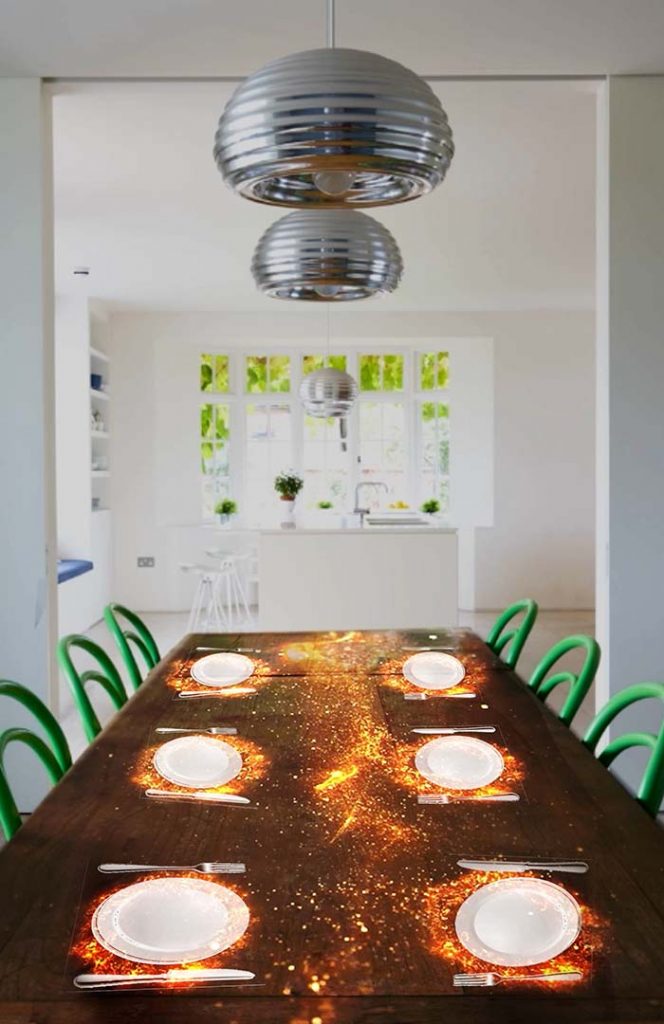
The Dinner of Lights is a projection system that uses animated scenes surrounding the plate to improve the multisensory dining experience of the patients and to initiate the adaptation to a healthy diet at their own pace. Offering a variety of sound and light stimuli anchors one in a sensory bubble that provides soothing, pleasure and nourishment.
This system avoids stigmatizing and labeling the participant’s appetite status and gently encourages him or her to eat. The visual themes can be easily adapted for children, adults or seniors. It creates social interaction through animations that link people together through movement. It also reinforces the multisensory intensity of the meal (tactile, visual, auditory, olfactory, gustatory senses) and allows a moment of relaxation while eating in poetry.
Tabletop projection is already implemented in stimulation and care products, notably for the elderly with the interactive tables created by Tovertafel. In the field of alimentation, the use of these technologies is mainly directed to the luxury market. Our wish is to make healthy eating more accessible and to encourage it.
Our main sources of research with this system concern undernutrition of the elderly, hospital alimentation and eating disorders.
“The projection that was playing resonated with me, inspired great emotions, and it made it easier for me to eat that chocolate dessert. “
An eating disorder patient on July 21, 2021
In order to respect the confidentiality of the current studies with medical partners, here is another example of our projection system applied this time to an audience of children to immerge them in an imaginary world during the afternoon snack.
The idea was to create a device dedicated to a public of children from 5 to 11 years old. The idea was to create a projection surrounding the meal, where dragons recognizable by each child, would grow up as the meal progressed. The graphics had to be simple, attractive and easily distinguishable during the projection. Each dragon had a particular colour so that it could be easily identified by the child as his or her own.
The dragons would smile, stick their tongues out, breathe fire to warm the child’s plate, fly, play with the other dragons and play around his plate. This type of animation allows a real collaboration between children and encourages communication and trust by having two avatars representing them mingle and play together. This encourages empathy, identification and conversation.
